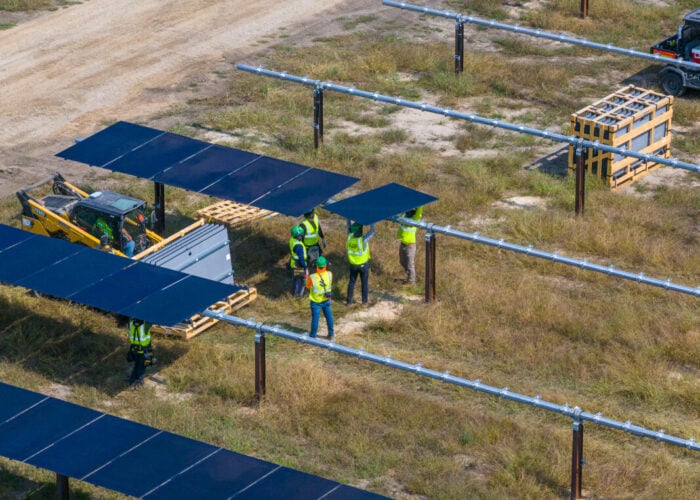Showa Shell Sekiyu subsidiary Solar Frontier has begun the commercial ramp of its new advanced, fully-automated CIS (copper, indium and selenium) thin-film solar module production plant, located in Miyazaki, Japan. Initial production capacity is claimed to be 600MW and is planned to reach a nameplate capacity of 1GW in 2012.
“The Kunitomi plant’s manufacturing processes involve some of the most advanced production automation in the industry, as we aim to ensure the highest quality and reliability,” noted Hiroshi Yoshida, VP of manufacturing at Solar Frontier. “The panels manufactured at the Kunitomi plant will have higher output and be larger than ever before, too, saving significantly on the BOS costs of installed systems.”
Try Premium for just $1
- Full premium access for the first month at only $1
- Converts to an annual rate after 30 days unless cancelled
- Cancel anytime during the trial period
Premium Benefits
- Expert industry analysis and interviews
- Digital access to PV Tech Power journal
- Exclusive event discounts
Or get the full Premium subscription right away
Or continue reading this article for free
Solar Frontier is one of the few thin-film manufacturers to have the capacity to match thin-film leader, First Solar. Although not housed in a single manufacturing plant, the complex is the first to be built and operated with a 1GW capability. The plant was broke ground in September 2009 and cost approximately US$1.2 billion.
Shigeaki Kameda, CEO of Solar Frontier, commented that, “The scale of our automation will provide unprecedented manufacturing efficiency. With the plant running at full capacity, we will become very competitive worldwide. Based in Germany, the United States and Japan, Solar Frontier’s expanding sales network and significant partnerships with global players will enable us to deliver economical and ecological next-generation CIS solar energy solutions to customers everywhere.”
Solar Frontier noted that products manufactured at the plant have now obtained certifications on performance and safety issued by Japanese and European standards organizations, while U.S. certifications were expected shortly.
The thin-film manufacturer claims production module efficiencies of 11.6% with its roadmap targeting 12.2% efficiencies in 2012. Solar Frontier did not provide manufacturing cost per watt figures.






